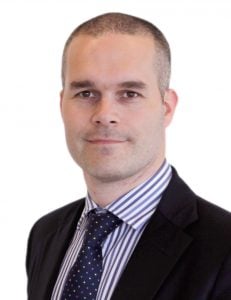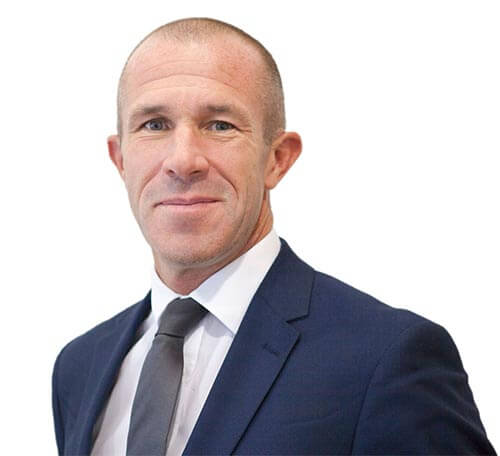After Bank of Montreal’s fund management arm acquired F&C Investments in 2014, the investment community has kept a keen eye on the phased rebrand and waited to see what it could expect from BMO Global Asset Management. Now in the final stages, all F&C collateral will be renamed as BMO by the end of this year and the business is looking forward to pushing out its “truly global offering”.
Kurtosys caught up with Ross Duncton, managing director, head of marketing & direct, and Stewart Conway, head of central marketing, at the group to hear about the latest developments.
BMO Global Asset Management has gone through a lot of change in recent years, following its acquisition of F&C, with the renaming of several fund names the latest in the rebranding exercise. Can you just bring us up to date; remind us where things are at, currently?
 Ross Duncton: One of the key results of becoming part of BMO was that it significantly increased our offering in terms of manufacturing. We have a full product suite, including in the US and Canada, and wanted to be able to bring the full proposition to clients globally.
Ross Duncton: One of the key results of becoming part of BMO was that it significantly increased our offering in terms of manufacturing. We have a full product suite, including in the US and Canada, and wanted to be able to bring the full proposition to clients globally.
Therefore, we rebranded a large part of the F&C business to BMO back in 2015. BMO obviously wasn’t very well known in EMEA at that particular point so it was deliberately a phased approach.
Now, there is an awareness of BMO. We understand it’s not a household name yet but there’s a good awareness within the investment community, so it makes sense at this point for us to rename the remaining funds and legal entities.
Ultimately investments are confusing enough and what we’re trying to do – and we believe both we, and the industry, have a lot to do on it – is simplify things as much as possible for our clients. That includes our approach to branding.
What would you like BMO to be known for, in the EMEA space, or more broadly?
RD: It’s not just the EMEA space as we’re definitely a global business now. In Canada we’re one of the top four banks – a household name. In North America, we’re the eighth largest financial institution by assets and, being a retail bank, have a very strong client focus.
We wish to harness this; focusing on the client, making sure we offer them products that are relevant and that meet their expectations. We’ve got a broad range of products so it is really about the experience and the offering that we give to clients that we want to be known for.
After such a busy few years, do things feel a bit more settled now, or is there still more work to be done?
RD: I think things are settled internally but there’s still a lot more work to do. We recognise the momentum and opportunity that comes with a business going through such a huge amount of change and I think that will continue for the better. We’ve got a very strong parent company so we’re very settled in that respect and are now on a journey that will see constant change for the foreseeable future, in terms of how we’re doing things.
Ross, in terms of your role in particular then, how have things evolved since the BMO takeover?
In terms of my remit and that of the team, while it hasn’t really changed that much over the last four to five years, covering all aspects of marketing within EMEA, the way we need to work has.
Being part of a retail bank, we can take a lot of positives with regard to brand infrastructure and rigour. We work a lot more closely with our colleagues in Toronto and through the big teams we have based over there that support a retail bank, there’s a lot we can tap in to. I am able to draw on those relationships and make sure we’re utilising everything that we have access to within the broader business.
The other aspect is that through growing in Europe, we’ve opened up six new offices over the last four years and our marketing support model is changing to make sure we’re fit for purpose in terms of supporting the different markets.
Stewart, tell me what does your role, as head of central marketing, entail?
 Stewart Conway: I literally run the internal marketing agency which is the central marketing team. It’s all the expertise from digital, design, events, sponsorship, content, presentation and fact sheets – all the core competencies. As a team I think our real focus is developing the communications capital of the organisation, working alongside our channel marketing team. How do we create partnerships, how do we create relationships and support the relationship building in our distribution team? It’s right from the individual investors up to the big institutions but it’s really putting that value into our communication and building the relationships – the central marketing team plays a key role in that, working closely with our channel marketing colleagues.
Stewart Conway: I literally run the internal marketing agency which is the central marketing team. It’s all the expertise from digital, design, events, sponsorship, content, presentation and fact sheets – all the core competencies. As a team I think our real focus is developing the communications capital of the organisation, working alongside our channel marketing team. How do we create partnerships, how do we create relationships and support the relationship building in our distribution team? It’s right from the individual investors up to the big institutions but it’s really putting that value into our communication and building the relationships – the central marketing team plays a key role in that, working closely with our channel marketing colleagues.
What are some of the key differences that you need to consider when targeting institutional versus retail markets?
SC: There are differences in how the products are sold through these channels, the kind of strategies and approaches to putting those products on the shelf or selling them.
But I prefer to focus on the fact that we are still building relationships with people. Whether that’s end investors or large institutions, those relationships have to be built on developing trust and trust isn’t something that you can just build in a one-off email or one-off brochure.
We need to invest in those relationships and constantly build that trust and care about it. That means listening, learning, responding, being far more tailored and personalised in the manner and the approach that we communicate. That’s been essential to how we’re building the team and the technology platform as we put it in place.
Does one approach tend to inform the other?
SC: The direct and retail space has been at the forefront of how we work closely with clients and get to know them better, understanding the data analytics to better effect. The other channels may sometimes move a bit further away from that end investor, so there is quite a lot of learning to be taken from the direct space into the ‘professional’ space.
RD: And vice versa. I think we’re in a fortunate position that within my broader team we have material focus in institutional, intermediary and consumer and the one thing that we’re looking to do is take the learnings from one to the other, with a particular look at how we can invest in technology that will help us take learnings from the direct space into the B2B market.
Stewart, you’ve been at the group for a little over a year. What is the one thing you have implemented that you’re most pleased with?
SC: We’ve been doing so much in the last 12-18 months since I’ve been here but the one thing I am proud of is the team, the central marketing department that I run. And the other teams in Ross’s area have created this strong bond across them; nurturing a team of individuals with so much talent. We are trying to help develop them into a cohesive, agile and responsive marketing team.
In the central team, many of them had acquired competencies that sometimes operated in silos, whereas we have started to blend that, making them more supportive of each other. For example, some are very focused on delivery and project management whereas others are more creative.
We have started to create a far more resilient, cohesive team and I’ve been coaching, managing, nurturing that talent, which is a crucial aspect when we start to talk about technology.
With the changes in global technology platforms, you need a team that works and develops continuously with these changes, only then can the technology be utilised as it should be.
What could we expect from you over the next year or two, given the digital developments and new technologies we’re seeing introduced across the industry?
SC: We’ve got a lot going on at the moment with a big technology project that covers several main items for us, helping to move us forward.
RD: We have always been a client-focused business and this is enhanced with the implementation of a global CRM system, Salesforce. This ensures we had a foundation in place on which we can build up client understanding at a global level.
We are then looking to how we service our clients better in a changing world. One key touchpoint we are excited about is online. In the next couple of months, we will be launching a new global web platform, starting in EMEA. The plan is to build something where we can impart information about our products – that doesn’t mean product push – in terms of what the fund managers are thinking about their investments, how we get that to the end client or prospect as quickly as possible so they can better understand our products.
SC: All good websites need to be responsive to different platforms such as mobile, tablet and so on. The ability for clients to easily find the contents or the information they want, or sign up to it in the format they prefer is a crucial point of sale.
After that we have a few new systems and developments in early stages that will further help us get closer to our clients and improve our service and level of response. This includes a content platform for sales teams where they can quickly access all the content and information produced across the global business to distribute to their clients. Strong decision making is based on timely and relevant information and we needed a platform that helped connect the investment professionals thinking with our clients being serviced by our sales teams, our new planned Sales Enablement platform will certainly help this.
Finally, you must be immensely proud of the fundraising efforts you made last year as part of CASCAID. Tell us about your event.
RD: We must give credit to Helen Wagstaff from MiP and her team for putting the initiative together, they have been absolutely fantastic and the industry support has been incredible. At the gala dinner last year, we heard from the head of Cancer Research and there were so many inspiring stories, we all felt that we needed to do something and be a part of it.
On the night Rob Thorpe, head of distribution, intermediary, UK, came up with the idea of walking around the M25 as every industry salesperson knows the M25 so well because they spend so many hours on it.
It’s not a very well-trodden path. As such, it took six months of planning on what is not the most scenic of routes! The team included me; Rob; John Bennett, director, head of distribution, wholesale, UK; David Logan, global head of distribution; and Stewart. Over six days we walked a marathon a day, which meant we spent a lot of time repairing blisters! We raised over £42,000 in the process for this year’s charity, Great Ormond Street Hospital (GOSH), so it was well worth it.
It was amazing being part of something where the collective power is so strong. Over £2.6m was raised last year and any way you look at it, that is a material figure. When I mention that to people outside the industry it makes you realise the huge efforts that can be made when you all pull together. The industry really does give back an awful lot.



